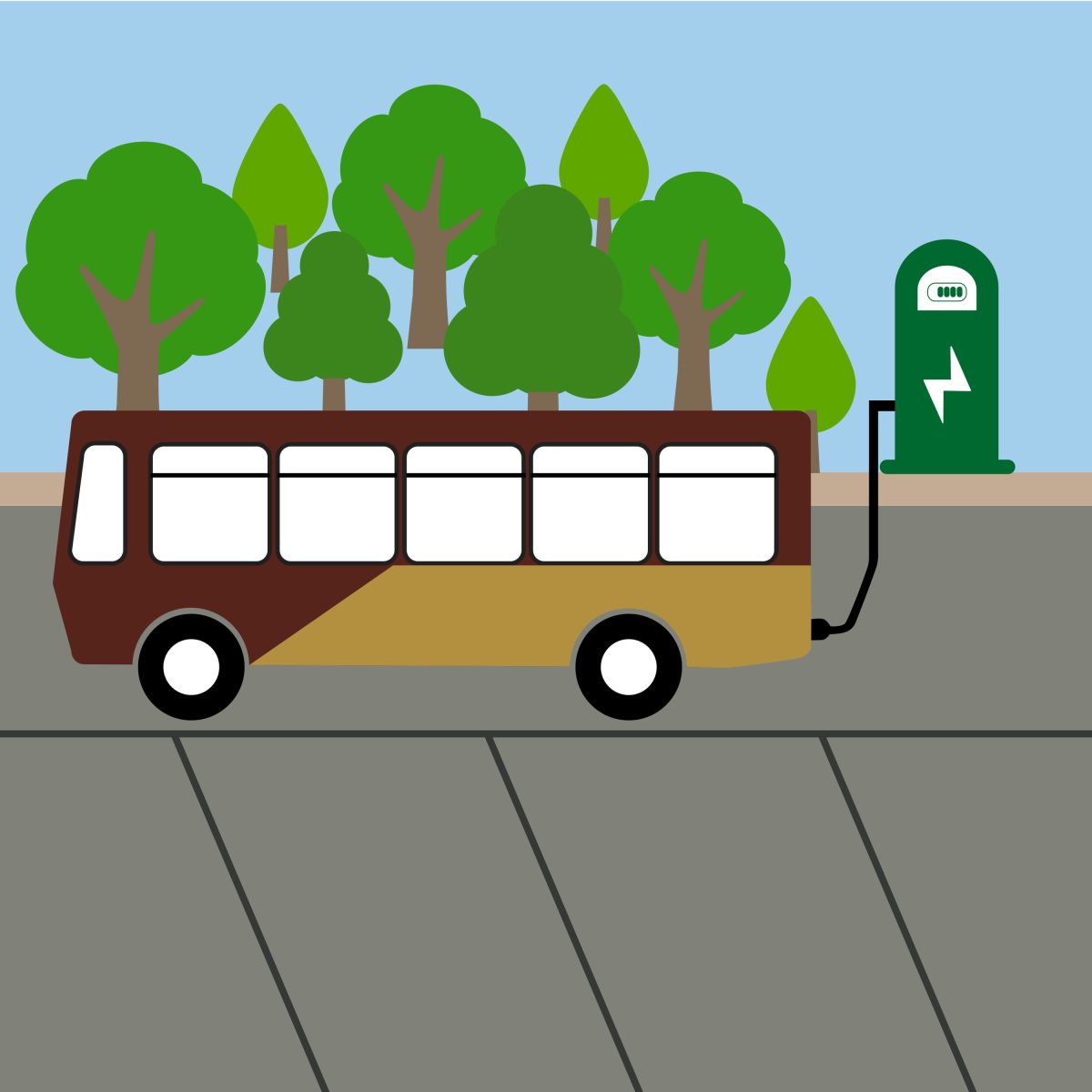The transportation sector produces nearly 30% of all U.S. global warming emissions, and it only gets worse with the production of more diesel vehicles. Shuttle buses at Texas State are fueled by diesel, which emits toxic emissions that are harmful to humans and the environment.
To live up to its goals of becoming a more environmentally conscious community, Texas State should begin making strides toward replacing the harmful diesel shuttle buses with electric buses, which are much better for the environment. They are also less costly to run when compared to the savings that would come from the fuel needed for diesel.
Diesel is widely used all over the world mainly because of its efficiency and reliability. Thus, diesel engines move a large portion of the world’s goods and power much of the world’s equipment, but they are also a large contributor to global warming. This has been noted by car companies with the production of hybrid and fully electric cars, but not much change has been made with diesel-fueled buses.
Even though about 17% of the world’s buses are electric, 99% of them are in China, and the U.S. is very slowly trying to integrate electric bus fleets in certain cities. Capital Metro in Austin has recently announced the addition of two electric buses, bringing the transit agency’s total to 12. Austin is a city trying to move away from diesel buses and has some conscious effort of doing what’s best for the environment.
Harmful chemicals emitted by diesel-fueled buses are known to have a negative effect on the environment, but few realize the impact it has on humans. Studies have shown that exposure to diesel exhaust gas causes lung damage and respiratory problems.
Every time Texas State shuttles pull into the LBJ Student Center bus loop, they are putting students and the environment in compromising situations. The ideal situation is to replace the black smoke propelled from loud shuttles with quiet electric buses that provide zero-emission.
If this were to happen, Texas State would not be the first university to practice carbon emission reduction by making its buses electric. According to Smart Energy International, the University of Georgia owns one of the largest fleets of electric buses in the U.S. In a 12-year lifespan, UGA’s electric shuttles will displace more than 2,500,000 gallons of diesel and eliminate over 4,500,000 pounds of carbon emissions annually.
If Texas State did the same, it would provide students and faculty transportation while also limiting their carbon footprint; Texas State could join the movement toward sustainability.
UGA was able to replace all of its diesel buses by receiving a grant secured from the State Railroad and Tollway Authority. Admittedly, electric buses come at a steep price. An average diesel transit bus costs around $500,000, compared with $750,000 for an electric bus, and a diesel school bus costs around $110,000 compared with $230,000 for an electric school bus.
The difference in price can be seen as a problem at first glance, but electric buses have the ability to save $400,000 in fuel expenses and averted maintenance costs. Still, the price of electric buses is what hinders Texas State from making the change.
“If additional funding were to become available in the future, Texas State could explore other options like electric buses,” said Alex Vogt, coordinator of Alternative Transportation at Texas State.
Needing financial assistance is understandable, but the price is an investment in the future of students and the environment that will yield more savings in the long run. The funds saved from electric buses could be put toward other school-related things, like scholarships or more electric buses.
A more prominent disadvantage of implementing electric buses are the charging stations that result in grid upgrades necessary for a bus fleet. Upgrading grids takes time and money that results in rethinking how systems are wired.
However, UGA is viewing this as a benefit, exploring additional use of bus batteries to provide power to other parts of campus. This could prove beneficial to the Texas State campus when considering the different needs and uses of electricity. Like UGA, Texas State could provide power to other areas on campus when rebuilding or adding architecture.
Every engine type has its advantages and disadvantages, but not all of them come with the zero-emission and sustainability advantages that electric buses provide. Texas State should think about the environment and the health of students by replacing its diesel shuttle buses with electric powered ones.
–Taylor Bradley is an English senior
The University Star welcomes Letters to the Editor from its readers. All submissions are reviewed and considered by the Editor-in-Chief and Opinion Editor for publication. Not all letters are guaranteed for publication.
Opinion: Texas State should replace diesel-fueled shuttles with electric buses
Taylor Bradley, Opinion Columnist
November 9, 2020
0
Donate to The University Star
Your donation will support the student journalists of Texas State University. Your contribution will allow us to purchase equipment and cover our annual website hosting costs.
More to Discover














